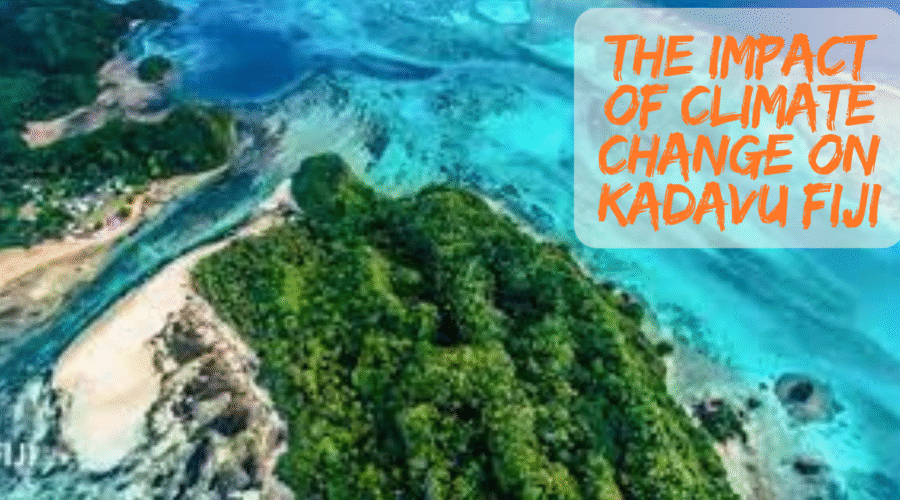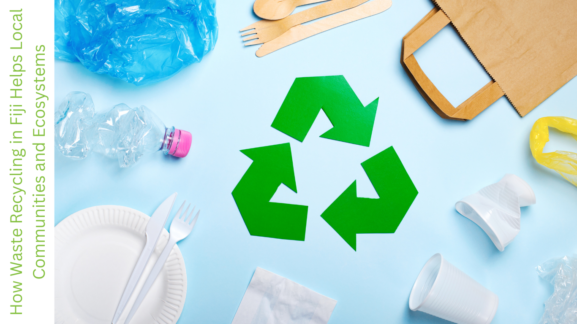The Impact of Climate Change on Kadavu Fiji
You know how travel articles love to call places “untouched”? They toss around words like pristine and unspoiled whenever they talk about Kadavu Fiji. And honestly? For ages, they weren’t wrong. Those sharp green peaks, the jungle so dense it feels solid, the reef circling the shore like it’s standing guard—Kadavu didn’t just feel far away. It felt like it existed outside of time completely.
But something’s changing. A different kind of tide is turning here, the kind you won’t read about in any glossy magazine. It’s not loud. It’s slow, persistent, working its way into the foundation of the place. Climate change isn’t some far-off idea here—it’s rewriting the rhythm of the ocean and the life in the village’s day by day.
This isn’t about what might come later. This is the story of what’s already happening.
The Reef That Feeds the Island
The Great Astrolabe Reef isn’t just a dive site. For the people of Kadavu Island, it’s a supermarket, a boundary marker, a sacred space, and the foundation of their livelihood. The reef provides most of the protein for local communities through fishing. It draws tourists, whose visits support family-run resorts and guides. It’s a living wall that buffers the island from the full force of ocean storms.
Now, that wall is under stress. The ocean isn’t just warm—it’s staying warm. And the corals are feeling it. They’re turning white, not just for a season, but over and over. When the heat doesn’t let up, the coral gets so stressed it rejects the very algae that gives it life and color. What’s left is a frail, spectral shell of what was once coral, not just dead coral. The coral dies without those algae. But it’s worse than just losing coral. The whole world that depends on it starts to fall apart.
Fish that need the reef to hide or eat begin to disappear. Everything connected to it suffers. The consequences are immediate. The fishermen return with half-full boats after longer days at sea. Divers now see more white, broken coral than bright fish. Life is quietly disappearing. The very thing that defines Kadavu is growing quieter.
The Encroaching Sea and Shifting Seasons
On land, the changes are just as hard to ignore. Coastal erosion has become something people measure with their own eyes—not just an idea in a book. In certain villages, locals can show you exactly where the beach used to be. Even burial grounds, places wrapped in deep cultural respect, aren’t safe from the rising water. Families are now facing painful conversations about moving their ancestors’ resting places, something once unthinkable.
The old rhythms are off. The signals that guided planting and fishing for generations no longer hold. The rain arrives late or heavy—too little, then too much. Dry wells. Washed-out roads. For families living close to the land, this isn’t climate change as a debate. It’s a shaky foundation under daily life.
How Kadavu Fiji is Fighting Back
You won’t find people on Kadavu Island sitting around waiting for the world to save them. They’re too busy working with what they have—and what they’ve always known. Along the coast, villagers are bringing back the mangroves. This is wisdom that has always existed, not flashy enterprises or large sums of money. The advice given by their grandparents still holds true: mangroves protect the land, harbor fish, and maintain a clean sea. One mangrove at a time, they are transforming ancient wisdom into innovative action. So they’re planting them. One stubborn, muddy root at a time.
Out on the reef, it’s the same hands-on spirit. Fishermen who’ve known these waters since they were kids are now gently tying pieces of healthy coral onto struggling parts of the reef. It’s patient, humble work. Nobody knows if it will truly be enough—but they aren’t doing it for certainty. They’re doing it for hope. And they’re taking it into their own hands.
There’s a growing movement to combine traditional wisdom with climate data. Village elders are sitting down with weather scientists and marine biologists, blending old knowledge with new data. They’re not throwing out tradition—they’re weaving it into today’s world, creating forecasts that respect both the moon phase and the satellite image. It’s not one replacing the other. It’s both, working together.
The Double Bind of Tourism in Kadavu Fiji
Tourism here cuts both ways. The money visitors spend helps put food on the table and pays for projects that protect the land and sea. It gives people options beyond fishing the reefs thin or cutting down trees. But that same opportunity comes with a cost—one that the island feels deeply. Many resorts here walk the talk: running in the sun and rain, teaching guests about the fragile world around them.
But there’s no ignoring the cost. Every flight and boat delivering tourists also brings carbon, erosion, and waste – the very pressures Kadavu is struggling under. The real challenge? Finding a balance. How do you welcome people without wearing out the welcome? The answer may lie in attracting fewer, but more deeply engaged visitors—travelers who come not just for photos, but to feel the place, respect it, and leave something good behind.
A Global Problem with Local Consequences
Kadavu’s story reflects one of climate change’s cruelest truths: those who did the least to cause it are feeling it the most. This island’s carbon footprint is tiny—almost nothing in global terms. Yet its people are living with some of the heaviest consequences. Climate injustice is the term used to describe such a type of unfairness. It implies that groups like Kadavu, who have led modest lives for many generations, are now bearing the consequences of a crisis that they did not start.
Support from outside the island is thus not charity. It’s a responsibility. Helping fund stronger infrastructure, reef research, or sustainable economies isn’t just aid. It’s a moral response to an uneven crisis. Kadavu Fiji, isn’t giving up. It’s pushing back, blending old ways with new methods in a quiet, stubborn display of resilience. Change here isn’t always dramatic. It’s in the slowly warming water, the creeping acidification, the shorelines wearing away bit by bit. So the effort to survive must be just as steady—day by day, choice by choice. What happens next on Kadavu won’t just depend on its people. It will depend on all of us.


